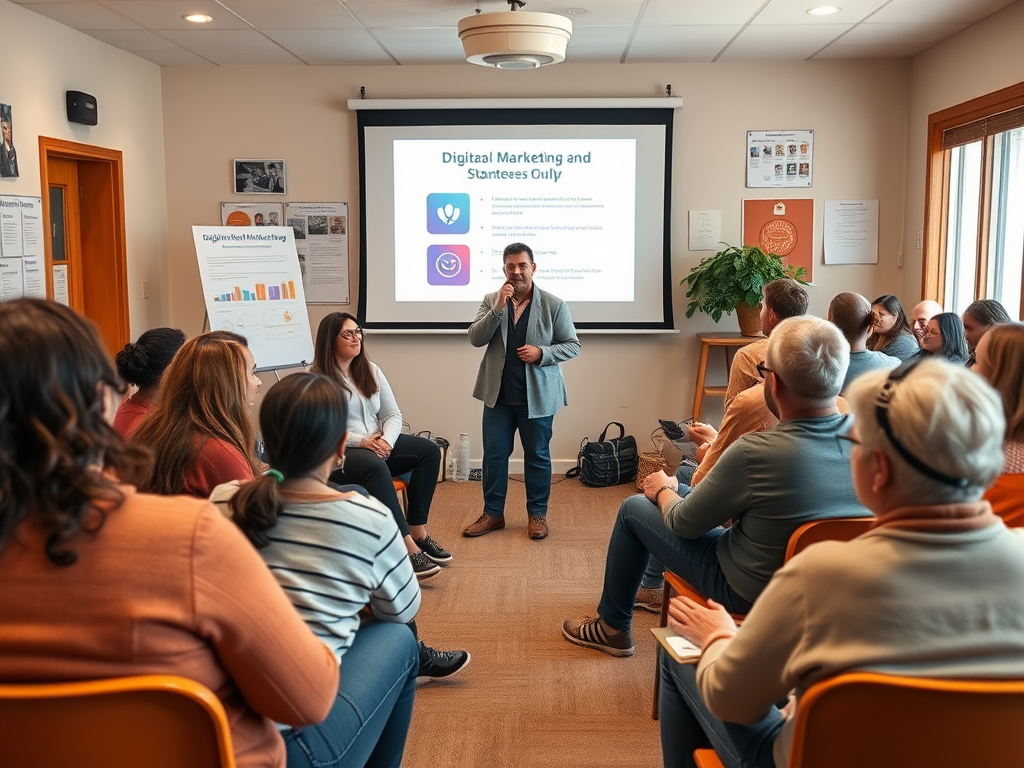In today’s fast-paced digital world, nonprofits face unique challenges when it comes to reaching their audience and securing support. With traditional fundraising efforts often falling short, understanding the intricacies of digital marketing has never been more essential. Each nonprofit, regardless of its size or mission, can leverage digital channels effectively to enhance its visibility and engage meaningfully with its supporters. This article explores various strategies that can empower nonprofit organizations in their digital marketing endeavors. The goal is to present insights and actionable steps that can create significant impact and foster deeper community connections. By utilizing these digital marketing strategies, nonprofits can transform their outreach and ultimately drive meaningful change.
Understanding Your Target Audience

Recognizing and understanding your target audience is paramount for any successful digital marketing campaign, especially for nonprofits. Knowing who you intend to reach allows you to tailor messaging that resonates deeply with your audience. This connection is crucial because when supporters feel understood, they are more likely to engage, donate, and advocate for your cause. Building strong relationships hinges on this foundational knowledge, which aids in constructing the right narrative that speaks to their values and beliefs. Therefore, comprehensive research into donor demographics, preferences, and motivations should be a priority. Utilizing tools like surveys and social media analytics can provide insights into potential supporters’ behaviors and interests.
Creating Donor Personas
Developing donor personas serves as a powerful tool for nonprofits to better understand their audience. These personas represent the different segments of your donor base, portraying their characteristics, motivations, and giving behaviors. For instance, one persona might depict a busy professional who prefers online giving due to time constraints, while another could represent a retired individual who values community engagement events. By clarifying these personas, nonprofits can craft targeted communications that appeal to specific donor segments. This strategy not only enhances message efficacy but also improves the overall donor experience by demonstrating that the organization values their individual preferences.
Analyzing Audience Behavior
Utilizing analytics tools to analyze audience behavior can dramatically improve engagement strategies. For instance, Google Analytics offers invaluable insights into how visitors navigate your website, which pages they spend time on, and where they drop off. This data enables nonprofits to refine their content and optimize their website for better usability. By understanding behavioral patterns, organizations can identify potential barriers that could hinder donor conversion, allowing them to take corrective actions. Ultimately, this analytical approach leads to informed decision-making and enhanced outreach effectiveness.
Essential Digital Marketing Strategies for Nonprofits

Nonprofits can effectively leverage various digital marketing strategies to amplify their outreach and fundraising efforts. These strategies not only increase visibility but also foster enduring relationships with supporters. Below are some of the most impactful methods nonprofits can adopt:
- Content Marketing: Crafting compelling content can showcase your nonprofit’s story and engage your audience. Blog posts, infographics, and videos are all valuable forms of content that can elevate your mission.
- Social Media Marketing: Platforms like Facebook and Instagram serve as essential tools for building community connections and promoting initiatives. Effective use of these channels can help spread awareness and mobilize volunteers.
- Email Marketing: Building and nurturing a subscriber list allows organizations to maintain contact with their supporters. Well-crafted email campaigns can keep your audience informed and engaged.
In addition to the above strategies, nonprofits should also consider investing in important tools and resources that can enhance their digital presence. Using analytics to track performance can help organizations understand what resonates most with their target audience.
| Tool | Purpose | Cost |
|---|---|---|
| Mailchimp | Email Marketing | Free and Paid Plans |
| Canva | Graphic Design | Free and Paid Plans |
| Hootsuite | Social Media Management | Free and Paid Plans |
| Google Analytics | Website Analytics | Free |
Building a Compelling Online Presence
Your online presence is a reflection of your nonprofit’s values and mission. A user-friendly, engaging website can greatly enhance visitor experience and encourage further interaction. Key elements to consider include clear calls to action that guide users toward donating or volunteering. Furthermore, your site should be mobile-optimized, ensuring accessibility for all users. A professional design that aligns with your organization’s mission can also create a strong first impression. By incorporating storytelling elements into your web design, you can better communicate the impact your organization has on the community.
The power of storytelling in visual design cannot be overstated. It invites your audience into the narrative of your nonprofit and illustrates your mission vividly. Engaging visuals, combined with impactful stories, can evoke emotional responses that lead to increased donations. Examples of successful nonprofits often include powerful imagery, testimonials, and compelling calls to action that inspire further involvement. These storytelling techniques help potential donors understand the difference their contributions can make, creating a connection that is both authentic and inspiring.
Conclusion
Digital marketing has transformed the landscape for nonprofits, providing innovative opportunities to enhance outreach, engage supporters, and drive fundraising initiatives. By understanding your audience and implementing strategic digital marketing efforts, nonprofits can leverage their unique missions to foster deeper connections with their supporters. Organizations now have an array of tools at their disposal, enabling them to tell their stories effectively and mobilize community support. When executed well, these digital strategies can propel nonprofits toward achieving their goals, ultimately making a meaningful impact within their communities.
Frequently Asked Questions
- What is digital marketing for nonprofits?
Digital marketing for nonprofits encompasses online strategies and techniques used to raise awareness, engage supporters, and drive donations. - How can nonprofits use social media effectively?
Nonprofits can create engaging content, interact with followers, and leverage social media platforms to promote events and initiatives. - What are the best practices for email marketing in nonprofits?
Personalize your emails, segment your audience, and always include a clear call to action. - Is SEO important for nonprofit websites?
Yes, SEO is essential for improving a nonprofit’s online visibility and attracting organic traffic to its website. - What tools can nonprofits use for digital marketing?
Nonprofits can utilize tools like Mailchimp for email campaigns, Canva for design, and Google Analytics for monitoring performance.


